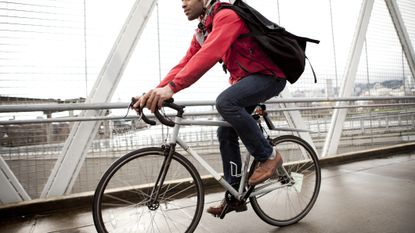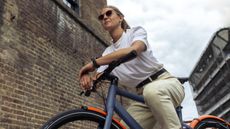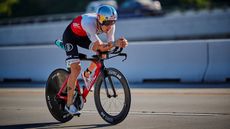If you’re looking for the best road bike, there’s a lot on offer, from bikes costing a few hundred pounds up to the top end machines ridden by the pros, where £10,000-plus is now the benchmark. So what do you get for your money as you pay more and is the very best road bike really 20 times better than an entry-level model? As you pay more for a bike, in general the weight will drop. That’s down to a lighter frame, usually switching from aluminium alloy to carbon fibre and lighter components, again with carbon fibre taking over from alloy in wheels and other parts.
Increasingly, aerodynamics are important in the best road bikes and many high end bikes will major on aero frame features and expensive aero carbon wheels, which you won't find on budget bikes.
There are exceptions though and niche brands like Mason and Moots will be more expensive than a bike from a more mainstream brand. Frames made of titanium are expensive and some brands like Colnago and Pinarello attract a premium too.
Online specialists like Ribble and Canyon will often undercut brands sold by bike shops. The down side though is that you’re usually buying your bike without having had a chance to ride it, you will have to part-assemble it yourself and you may need to pay a bike shop to sort out any problems.
So, in general, what do you get at different price levels? It's worth knowing as going too cheap – or needlessly pricey – is a mistake every cyclist makes at least once in their life.
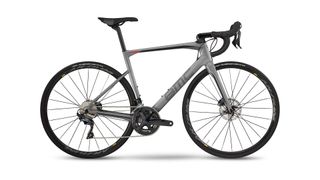
Under £1000
At this price, you’ll find an alloy frame with an alloy wheelset. Rim brakes predominate, although bikes like the Boardman SLR 8.8 come with mechanical disc brakes for better, more consistent stopping. Bikes will in general weigh significantly over 10kg.
The groupset will almost always be Shimano with between eight and ten speeds (Claris, Sora or Tiagra), although at the lower end you might find Microshift components. All of these give you pretty good shifting, although the jumps between gear ratios might be quite large, or you might find more limited range, with an 11-28 cassette at the rear rather than one that goes to a 30-plus largest sprocket. That makes getting up hills that bit harder - not great on a bike that’s going to be heavier too.
Wheels will invariably be made of alloy and usually run on quick release hubs. They’re likely to be weighty, although robust, and come with cheaper tyres.
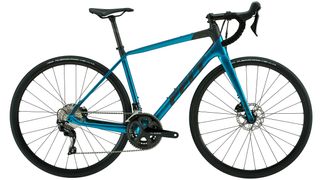
£1000 to £2000
In this price range, you’ll see more of a mix of options. Carbon fibre will start to take over from aluminium for frame material, although don’t rule out alloy - there are some excellent alloy frames out there from the likes of Canyon and Cannondale, which may be lighter than carbon and ride as well or better. Whole bike weight may drop below 10kg.
Disc brakes increasingly take over from rim brakes and will usually be hydraulic, which are more effective than mechanical. Disc brakes are more expensive than rim brakes though, so whereas a few years ago you might find an 11-speed Shimano 105 or even Ultegra rim brake groupset at this price, 10-speed Tiagra is now common. You’re unlikely to notice the larger jumps between gears or much difference in shifting though.
Wheels will usually have alloy rims and may come from name brands like Mavic and they will probably be ready to be set up with tubeless tyres, which give better puncture protection and a more comfortable, faster ride.
This is something of a sweet spot in bike prices, where there’s a wide choice of very rideable machines that won’t break the bank.
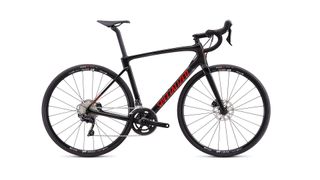
£2000 - £5000
That’s a big range of prices and covers an explosion of available tech. Almost all bikes will have a carbon frame, with aero tube profiles increasingly common. You might find special vibration damping features like Trek’s IsoSpeed or Specialized’s Future Shock. Titanium is also an option - it’s rustproof, doesn’t wear out over time and usually comes in a flashy brushed metal finish.
At the bottom end of this price range you’ll find Shimano 105 11-speed groupsets. The smarter Ultegra predominates, although you may also find Shimano’s top drawer Dura-Ace fitted to more expensive bikes. Some bikes might come with gearing from Campagnolo or SRAM too.
Hydraulic disc brakes are now the norm and you might find higher gearing. A chainset with 52 tooth and 36 tooth rings, labelled semi-compact, is an increasingly common alternative to the 50/34 tooth compact chainsets usually found on lower priced bikes.
Towards the top end of this price range, Shimano Ultegra Di2 is a common groupset option. It’s an electronic groupset where a battery in the frame powers motors in the derailleurs to change gears. That leads to very crisp gear changes and opens up the possibility to programme the shifting so it works differently from a mechanical system.
You’ll often find carbon wheels on bikes in this range and they may come from name brands. These wheels have deeper rims, usually around 40mm, that improve the bike’s aerodynamics, although they may be trickier to handle in gusty side winds.
Weight-wise expect around 8kg or less.
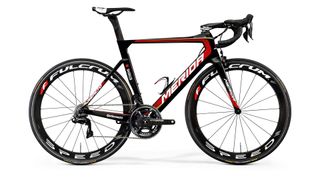
£5000-plus
Spend this much on a road bike and you get into pro-level specs. Carbon fibre is the predominant frame material, with higher spec fibre labelled “high modulus” or “premium” leading to lighter frames that might bring the whole bike weight down below 7kg. There’ll usually be specific features to make the bike more aero, lighter or more comfortable.
The top level mechanical groupsets are an option, but you’ll more often find electronic groupsets from Shimano (Ultegra Di2 or Dura-Ace Di2), Campagnolo (labelled EPS) or SRAM’s wireless electronic options (Force eTap AXS or Red eTap AXS). Both Campagnolo and SRAM offer 12 speeds, whereas Shimano still tops off with 11. Bikes in this price range are increasingly coming with a pre-fitted power meter too.
You’ll almost always get name brand wheels and other components, with deep section aero carbon wheels from premium brands like Zipp and DT Swiss and saddles from the likes of Fizik, Selle Italia and Prologo.
It’s not just the initial outlay that will set you back on a top spec bike though. Bike parts wear out and at full price it will cost you over £300 to replace a top-of-range cassette and chain, which you will probably need to do at least once a year. The equivalent price for Shimano Tiagra is around £60.
Wreck your electronic rear derailleur and you’re looking at £500-plus. Ouch.
